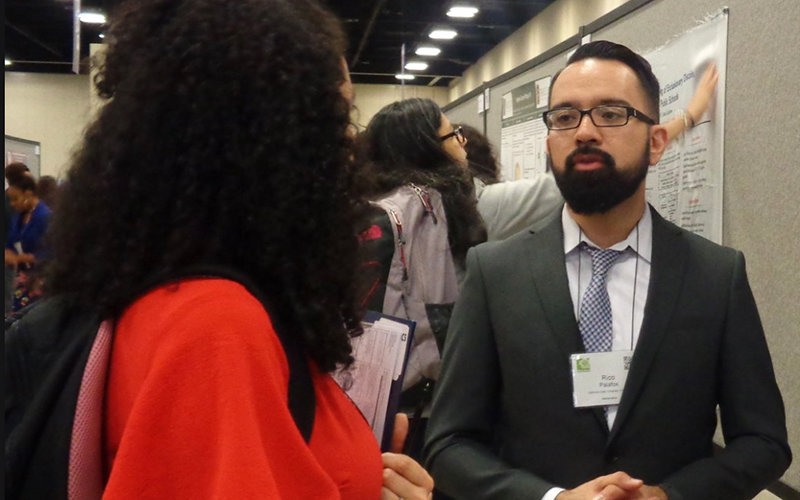
For those afflicted with oral cancer, finding the optimum combination of drugs to treat the disease can be complicated, and even deadly. That is why Cal State Fullerton statistics student researcher Rico Palafox is motivated to identify the ideal combination of drugs.
Palafox explained there are various pharmaceutical drugs on the market that treat oral cancer, yet large doses of single drugs are often required in order to achieve the desired treatment goal.
“These high doses may have a toxic side effect, whereby, a greater than desired portion of the body’s healthy cells are also affected during treatment,” continued Palafox, a mathematics major studying probability and statistics.
“Literature suggests that administering two or more drugs may result in a synergistic effect, where combinations of drugs, each administered at a lower dose, still achieve or exceed the desired treatment outcome.”
His project, with fellow undergraduate mathematics researcher Jose Toledo, and faculty adviser Jessica Jaynes, assistant professor of mathematics, focuses on 11 drugs previously shown to be effective in treating oral cancer in order to work toward identifying ideal combinations of these drugs.
“We hope the results of our statistical analyses not only identify oral cancer treatments with improved health outcomes, but also show support for further application of the methodology we employ,” Palafox said.
For his work, Palafox received a 2018 Student Presentation Award in the mathematics and statistics category at the recent Society for Advancement of Chicanos/Hispanics and Native Americans in Science (SACNAS): The National Diversity in STEM Conference in San Antonio, Texas.
SACNAS noted that Palafox’s “communication skills and command of the research topic were exemplary” and commended his “hard work, dedication and sacrifice necessary for a student to stand out from their fellow presenters.”
More than 1,000 posters and oral presentations were delivered at the SACNAS conference, attended by about 4,000 students and professionals. Scholars in CSUF’s Big Data Discovery and Diversity- Research Education Advancement and Partnership (BD3-REAP), Graduate Readiness and Access in Mathematics (GRAM), Maximizing Access to Research Careers (MARC) and Southern California Ecosystems Research Program (SCERP) attended and presented their research projects at the national conference.
Palafox, a first-generation college student, is a scholar in GRAM and the McNair Scholar programs, which both help undergraduates prepare for graduate school. Last year, he was a scholar in the Big Data Discovery and Diversity- Research Education Advancement and Partnership program. He plans to pursue a doctoral program and career in biostatistics, the study of statistics as it relates to a wide range of topics in biology.
For the project on “Seeking Optimal Oral Cancer Drug Combinations,” the researchers have been able to eliminate three drugs that were not significantly contributing to the desired treatment goals, and have found important interactions among the remaining drugs.
“Our goal is to pinpoint the ideal dosage levels for the drugs in the combinations our statistical analyses have identified as most efficient,” he said.
Palafox added that his undergraduate immersive experiences are giving him a better understanding of the research process to become well prepared to engage in graduate-level research.
“I have learned that research can be a very self-directed process that requires discipline and perseverance,” he said. “The challenge during the discovery process can be motivating, and especially rewarding, once you identify initial results. I can say that this experience has taught me that I want to pursue a career in biostatistics research, and has helped narrow the scope of my area of interest.”